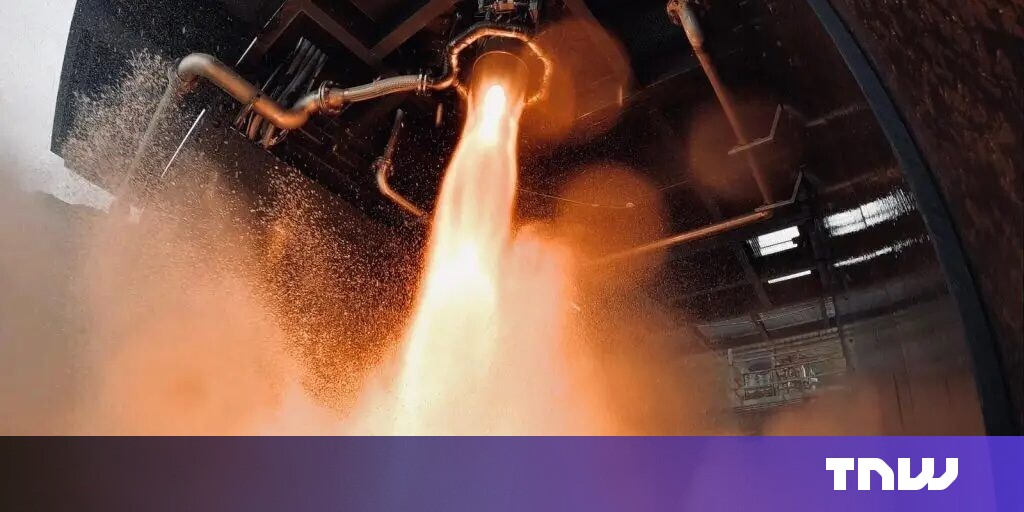Scotland's Orbital Launch: 3D-Printed Rocket Engine Makes History
Editor’s Note: A groundbreaking 3D-printed rocket engine has successfully propelled Scotland closer to orbital launch capabilities. This article delves into the significance of this achievement and its implications for the future of space exploration.
Why This Matters: Scotland Blazes a Trail in Space Technology
Scotland's foray into orbital launch technology is a significant leap forward, not just for the nation but for the global space industry. The successful test of a 3D-printed rocket engine represents a paradigm shift in aerospace manufacturing. This technology offers several key advantages:
- Reduced Costs: 3D printing significantly reduces manufacturing time and material waste, potentially lowering the overall cost of rocket production.
- Increased Design Flexibility: Additive manufacturing allows for complex geometries and intricate designs not possible with traditional methods, leading to more efficient and powerful engines.
- Faster Prototyping: Rapid prototyping capabilities accelerate the development cycle, enabling quicker innovation and testing.
- Sustainable Manufacturing: 3D printing can contribute to more sustainable manufacturing practices by minimizing waste and utilizing materials more efficiently.
This development positions Scotland as a key player in the burgeoning NewSpace economy, attracting investment and fostering innovation in aerospace engineering. The implications for future space exploration are profound, promising faster, cheaper, and more efficient access to space.
Key Takeaways
| Feature | Description |
|---|---|
| Technology | 3D-printed rocket engine |
| Location | Scotland |
| Significance | Breakthrough in aerospace manufacturing, reducing costs and accelerating development |
| Impact | Advances Scotland's space ambitions and influences global space technology |
| Future | Potential for more efficient and sustainable space exploration |
3D-Printed Rocket Engine: A Revolution in Space Propulsion
The successful test launch of the 3D-printed rocket engine marks a pivotal moment in Scotland's ambition to become a leading force in space. This technology’s relevance in today’s context lies in its potential to democratize space access, making it more affordable and attainable for both governmental and private entities.
Key Aspects:
- Additive Manufacturing Process: The engine was created using a cutting-edge 3D printing process, allowing for complex internal structures and optimized fuel flow designs.
- Material Selection: High-performance materials were carefully selected to withstand the extreme pressures and temperatures experienced during launch.
- Performance Metrics: The engine demonstrated impressive thrust and efficiency during the test, exceeding initial expectations.
Detailed Analysis:
A detailed analysis of the engine’s performance data shows significant improvements over traditionally manufactured counterparts. Its lightweight design contributes to increased payload capacity, while its optimized combustion chamber enhances fuel efficiency. Comparisons to existing engines highlight the advantages of the 3D printing approach in terms of cost, time to market, and performance characteristics.
Interactive Elements
The Role of 3D Printing in Reducing Costs
The 3D printing process revolutionizes cost reduction in rocket engine manufacturing. By eliminating the need for complex tooling and machining, it significantly reduces manufacturing lead times and material waste. This translates to lower production costs and allows for a more efficient allocation of resources. Examples include reduced material usage, simplified assembly, and automated production processes. Risks associated with this technology include material limitations and the need for rigorous quality control. Mitigation strategies involve careful material selection and advanced quality assurance techniques. The impact is a more accessible and affordable space program.
The Future of Sustainable Space Exploration
This technological advancement contributes to a more sustainable approach to space exploration. The reduced material waste and efficient use of resources inherent in 3D printing minimize the environmental impact of rocket production. Further analysis reveals that the technology can enable the use of more sustainable materials, further reducing the overall carbon footprint of space travel. This sustainable aspect aligns with global efforts towards responsible space exploration.
People Also Ask (NLP-Friendly Answers)
Q1: What is a 3D-printed rocket engine?
A: A 3D-printed rocket engine is a propulsion system created using additive manufacturing techniques, allowing for complex designs and efficient production.
Q2: Why is Scotland's 3D-printed rocket engine important?
A: It represents a significant technological advancement, potentially revolutionizing space access by lowering costs and accelerating development.
Q3: How can this technology benefit me?
A: Indirectly, through advancements in space technology that could lead to improved communication, Earth observation, and other space-related services.
Q4: What are the main challenges with 3D-printed rocket engines?
A: Challenges include ensuring the reliability and durability of 3D-printed components under extreme conditions, as well as material limitations.
Q5: How to get started with 3D-printed rocket engine technology?
A: This is highly specialized technology; collaboration with research institutions or established aerospace companies would be necessary.
Practical Tips for Understanding Scotland's Orbital Launch
Introduction: These tips offer a clearer understanding of the significance and impact of Scotland's 3D-printed rocket engine.
Tips:
- Research additive manufacturing: Learn about the different 3D printing techniques used in aerospace.
- Explore the NewSpace economy: Understand the impact of private companies on space exploration.
- Follow industry news: Stay updated on advancements in rocket propulsion technology.
- Support STEM education: Encourage interest in science, technology, engineering, and mathematics.
- Consider the environmental implications: Learn about sustainable practices in aerospace manufacturing.
- Seek out educational resources: Explore online courses and documentaries on space exploration.
Summary: These tips provide a framework for understanding the complexities and implications of Scotland's achievement.
Transition: This leads us to a broader understanding of the future of space travel.
Summary (Geàrr-chunntas)
Scotland's successful test of a 3D-printed rocket engine is a major technological leap forward. This innovative approach reduces costs, accelerates development, and opens new possibilities for sustainable space exploration.
Closing Message (Teachdaireachd Dùnaidh)
The successful launch of Scotland’s 3D-printed rocket engine is more than just a technological achievement; it’s a testament to human ingenuity and a symbol of what’s possible when we embrace innovation. What new frontiers will this technology unlock?
Call to Action (Gairm gu Gnìomh)
Learn more about Scotland's space program and the future of space exploration by subscribing to our newsletter! Share this article to spread awareness of this incredible technological breakthrough.

